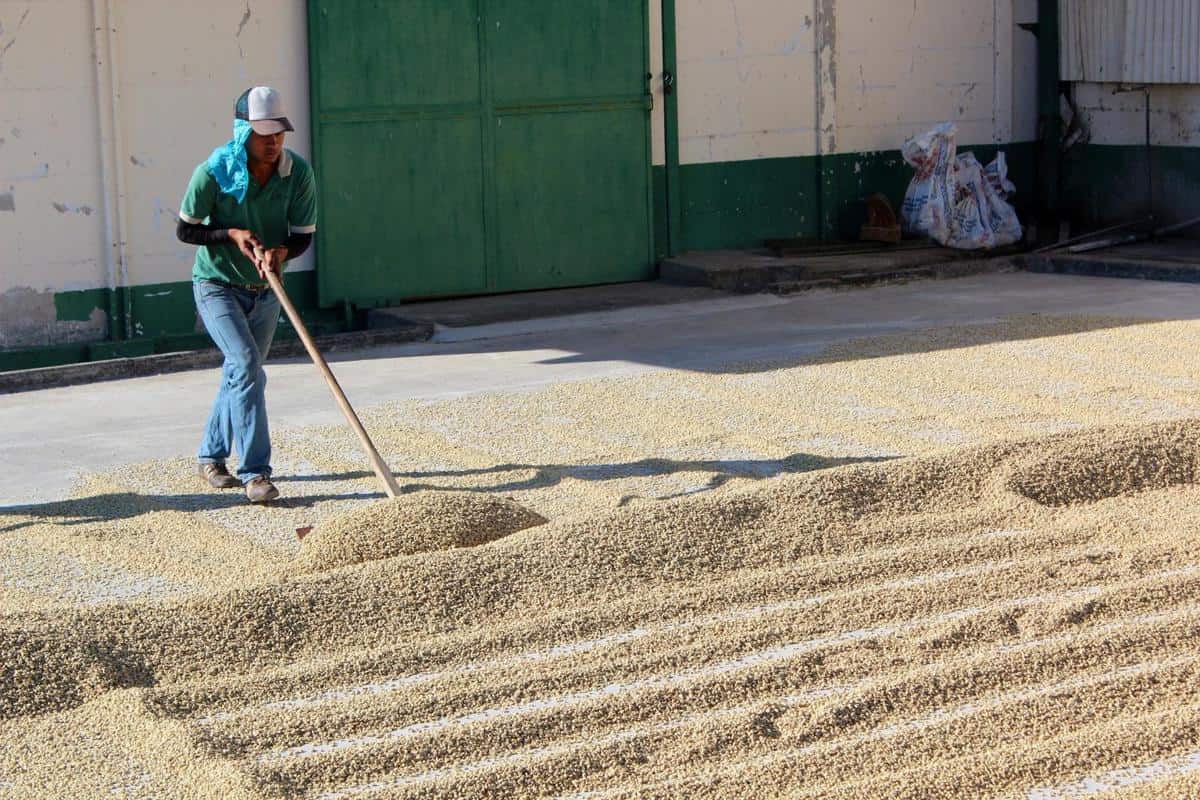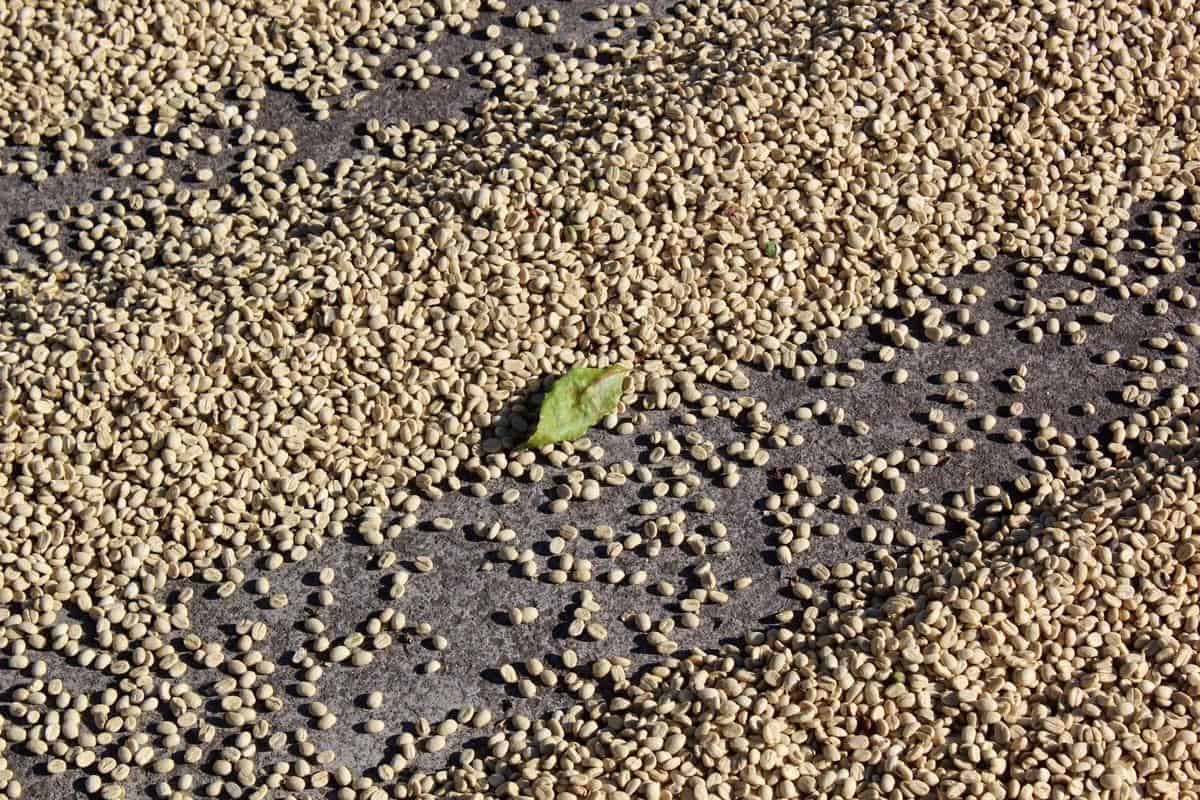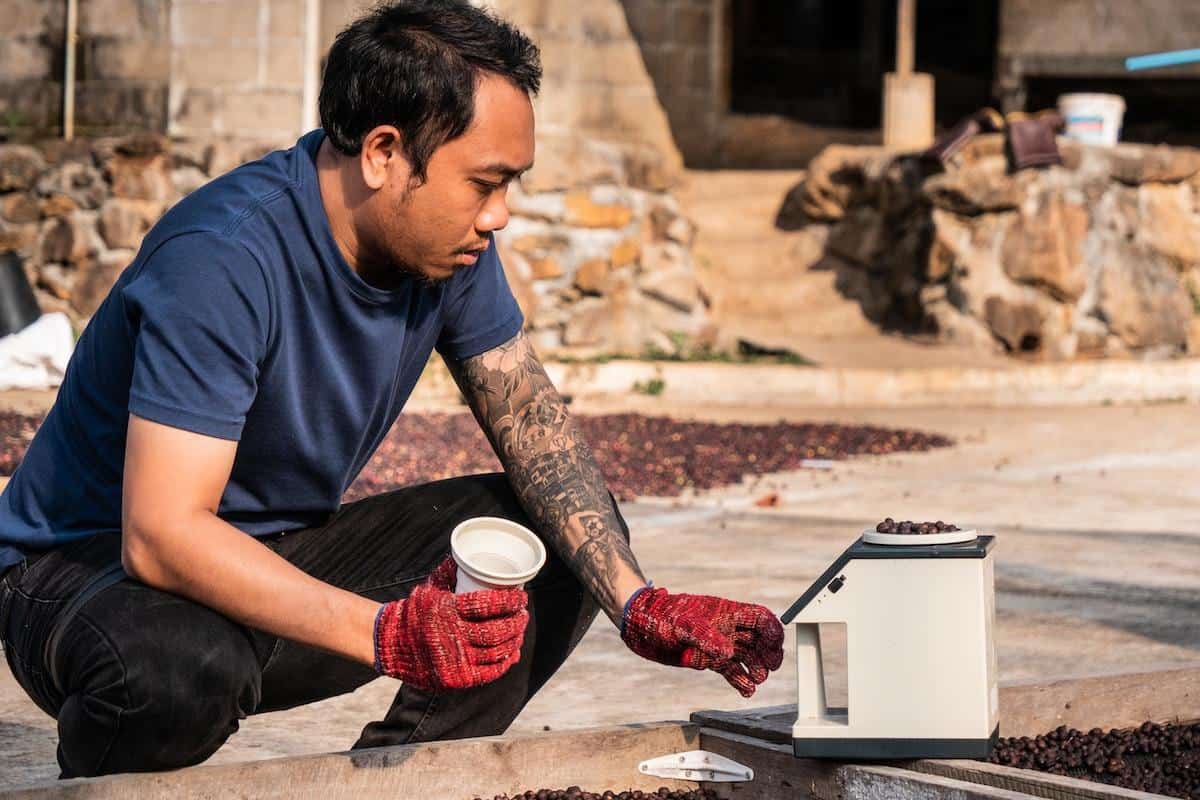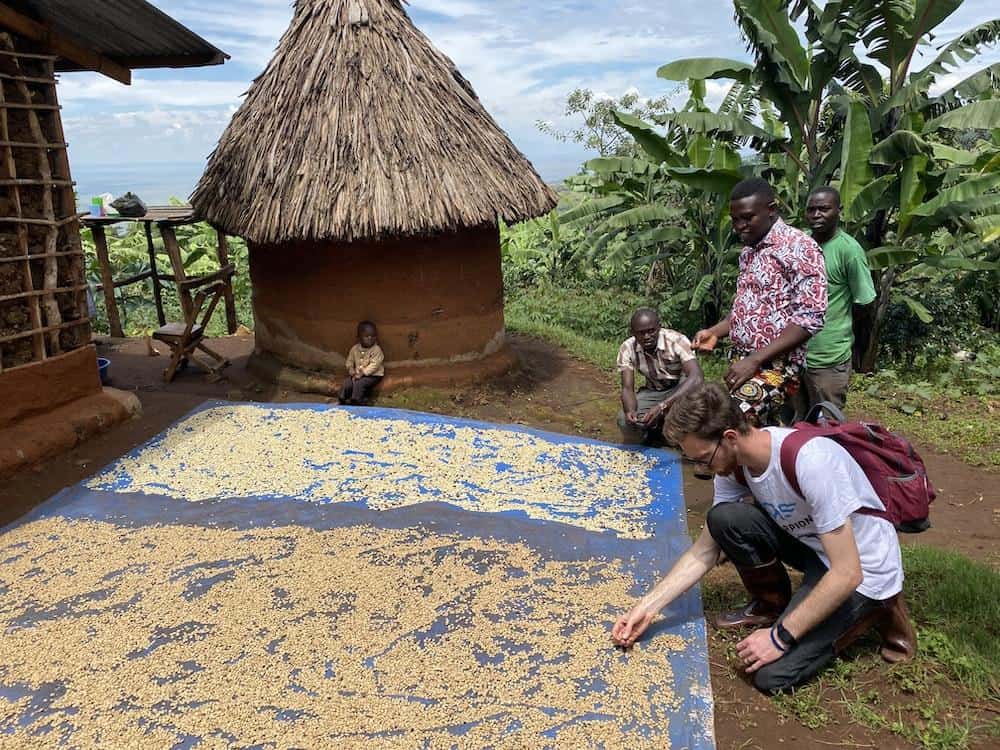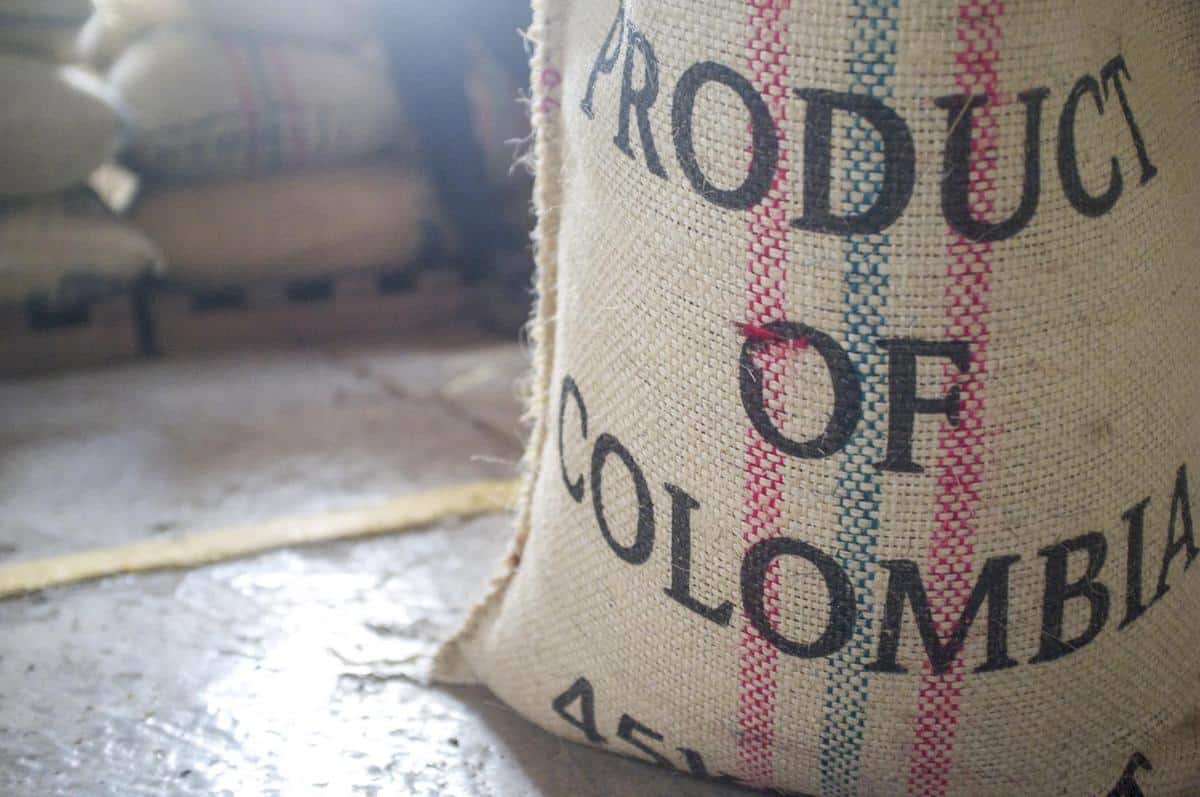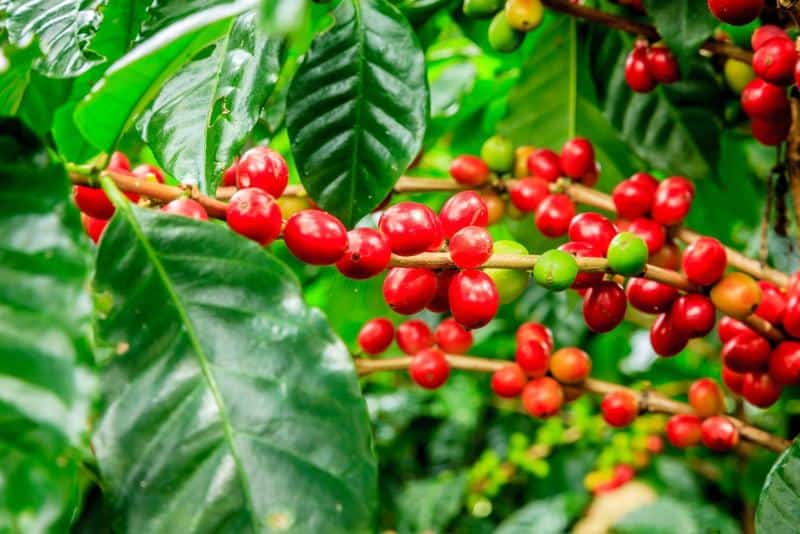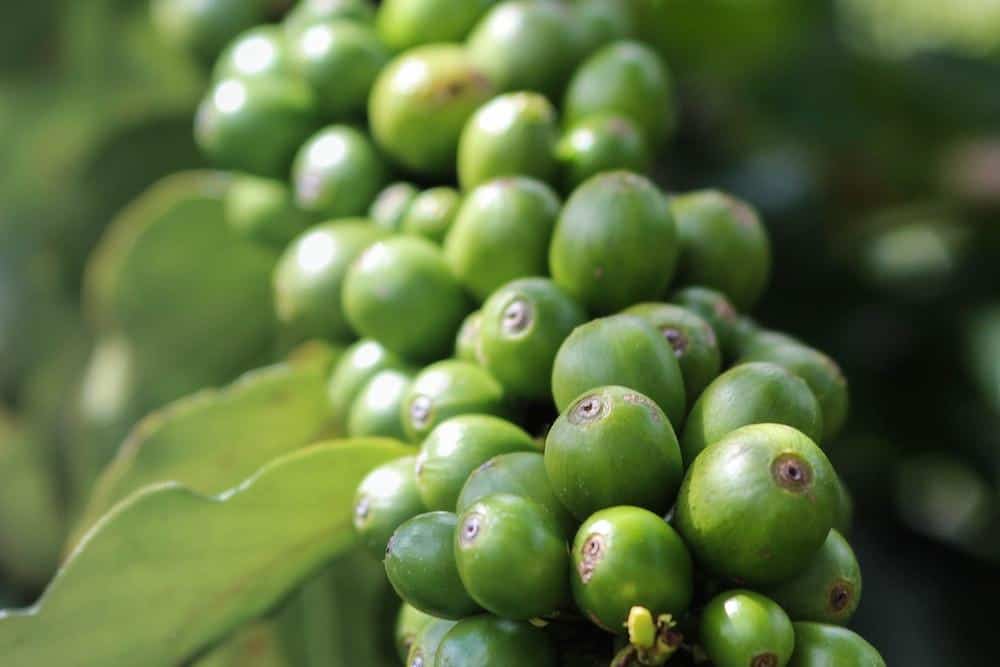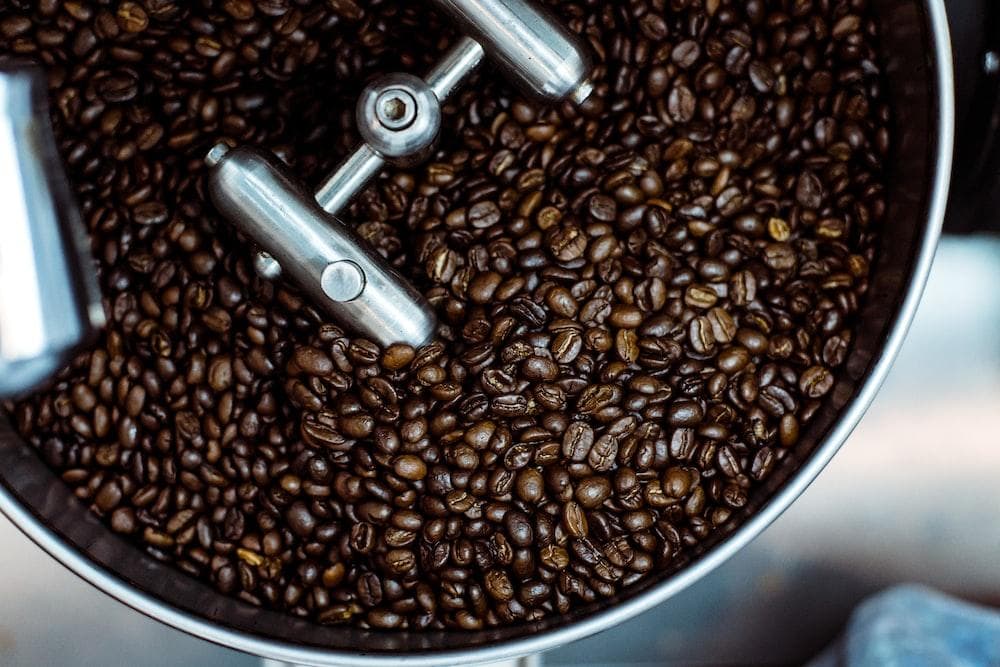Drying coffee beans is a crucial step in the coffee production process that significantly impacts the flavor and quality of the final brew. The way in which coffee beans are dried can either enhance or diminish their unique characteristics, making it a vital aspect for both coffee producers and enthusiasts to understand. In this article, we will delve into the various techniques and factors that contribute to drying coffee beans, with a focus on boosting flavor through expert techniques.
The drying process involves removing moisture from freshly harvested coffee cherries to stabilize the beans, preventing spoilage and ensuring optimal flavor development. By reducing the moisture content, complex chemical reactions occur within the bean, leading to increased flavors and aroma compounds. Additionally, proper drying helps preserve the delicate nuances of each coffee variety while reducing the risk of defects or off-flavors.
Factors such as moisture content, weather conditions, and location play key roles in determining how coffee beans are dried. Moisture content must be carefully controlled during drying to achieve desired flavor profiles. Weather conditions influence drying times and methods, with temperature, humidity, and airflow all playing vital roles. Furthermore, geographical location affects natural drying methods used by farmers and introduces different environmental aspects that contribute to flavor development.
In the following sections of this article, we will explore traditional sun drying techniques handed down from generations past as well as modern mechanized approaches that have revolutionized efficiency in commercial operations. We will discuss specialized drying techniques for specialty coffee production and examine how different post-harvest processing methods impact flavor. Moreover, we will shed light on advanced technologies being used in industrial-scale bean drying processes today.
Whether you are a passionate home barista or a professional in the coffee industry seeking to elevate your knowledge and skills, understanding the importance of proper bean drying is essential. Through this comprehensive exploration of drying techniques and their impact on flavor enhancement, we aim to empower you with expert tips and tricks for achieving perfection in coffee bean drying.
Together with case studies of successful producers who have elevated flavor through strategic drying techniques, we will present insights and knowledge to help unlock the full potential of coffee flavors through careful drying methods.
Factors Affecting Coffee Bean Drying
Coffee bean drying is a critical step in the coffee production process that greatly affects the flavor profile of the final product. Several factors come into play during the drying stage, including moisture content, weather conditions, and location. Understanding and mastering these factors is essential for producers to ensure optimal flavor enhancement.
Moisture content plays a crucial role in coffee bean drying. It is necessary to reduce the moisture content from approximately 60-70% to around 11-12% for proper preservation and storage. If beans are not adequately dried, they can develop mold or other defects that can negatively impact the taste and aroma of the coffee. On the other hand, over-drying can result in brittle beans that lack complexity in flavor.
Weather conditions also influence coffee bean drying. The drying process depends on a delicate balance of temperature, humidity, and airflow. Ideally, the beans should be exposed to sunlight for even drying but protected from rain or excessive exposure to heat. Producers must carefully monitor weather patterns to ensure consistent and optimal drying conditions.
Location is another factor that affects coffee bean drying. Different regions have varying climates which can impact how quickly or slowly beans dry. For example, areas with high altitudes may experience cooler temperatures, which can prolong the drying time. Additionally, elevation can affect air pressure and humidity levels, further influencing the drying process.
Understanding these factors allows producers to make informed decisions about when and how to dry their coffee beans. By closely monitoring moisture content, adapting to different weather conditions, and considering location-specific variables, producers can achieve optimal flavor enhancement during the drying stage.
| Factors | Influences |
|---|---|
| Moisture Content | Affects preservation of beans; inadequate or excessive moisture can lead to quality issues. |
| Weather Conditions | Temperature, humidity, and airflow together determine drying speed and consistency. |
| Location | Different climates and elevation impact the duration and effectiveness of drying. |
Traditional Sun Drying Techniques
Traditional sun drying techniques have been used for centuries to dry coffee beans, resulting in a unique flavor profile that many coffee enthusiasts find irresistible. This method involves spreading harvested coffee cherries out on patios, rooftops, or mesh beds to be naturally dried by the sun’s heat and airflow. The process requires careful monitoring and attention to detail to ensure optimal drying conditions and consistent flavor development.
One of the key advantages of traditional sun drying is its simplicity. Farmers do not require expensive equipment or advanced technology, making it a cost-effective option for small-scale coffee producers. In addition, sun-dried coffee beans are known for their complex flavors, low acidity, and enhanced sweetness. This is due to the slower drying process, which allows more time for chemical reactions within the bean, resulting in a well-developed flavor profile.
However, traditional sun drying is highly dependent on weather conditions. Rainstorms or high humidity can hinder the drying process and increase the risk of mold growth on the beans, negatively impacting flavor quality. Therefore, farmers must carefully assess weather forecasts and plan their drying schedules accordingly. Some regions with consistent dry seasons are better suited for sun drying than others.
To illustrate the impact of traditional sun drying techniques on coffee flavor enhancement, let’s take a look at a case study from Brazil – one of the world’s leading coffee producers. Coffee farmers in Brazil have been using sun drying methods for generations and have perfected their craft over time. The country’s warm climate combined with careful monitoring ensures that optimal moisture content is achieved without compromising flavor quality.
| Country | Region | Coffee Variety |
|---|---|---|
| Brazil | Mogiana | Yellow Bourbon |
| Brazil | Cerrado | Red Catuai |
In the Mogiana region of Brazil, coffee farmers predominantly grow the Yellow Bourbon variety, known for its rich and chocolatey flavor notes. The coffee cherries are carefully hand-picked and then spread out on patios to dry under the sun for approximately two to three weeks. This process allows the beans to develop a complex sweetness, balanced acidity, and full-bodied mouthfeel.
On the other hand, in Brazil’s Cerrado region, the Red Catuai variety is commonly grown using sun drying techniques. These coffee cherries are also meticulously harvested before being placed on raised mesh beds for drying. The Cerrado’s hot and dry climate ensures a consistent drying process that enhances the natural flavors of this variety. The resulting cup of coffee exhibits bright citrus notes with a harmonious combination of acidity and sweetness.
By understanding the traditional sun drying techniques employed by coffee farmers around the world and exploring specific case studies such as those from Brazil, coffee enthusiasts can gain a deeper appreciation for how this centuries-old method contributes to flavor enhancement.
Modern Mechanized Drying
In recent years, the coffee industry has witnessed significant advancements in drying techniques, with modern mechanized drying methods revolutionizing the way coffee beans are processed. These innovative approaches have not only improved efficiency and consistency but have also enhanced flavor profiles and reduced the risk of defects. Let’s explore some of these cutting-edge techniques that are transforming the coffee bean drying process.
- Mechanical Dryers: Mechanical dryers are a popular choice for large-scale coffee bean producers as they offer controlled and efficient drying. These machines utilize hot air to remove moisture from the beans, ensuring consistent drying throughout. They are equipped with sophisticated temperature and humidity controls, allowing producers to adjust settings according to specific requirements. Mechanical dryers provide faster and more uniform drying compared to traditional methods, leading to enhanced flavor development.
- Vacuum Drying: Vacuum drying is another modern technique gaining momentum in the coffee industry. This method involves removing moisture from green coffee beans using low-pressure conditions. By reducing pressure within a vacuum chamber, boiling point lowers significantly, enabling water inside the beans to evaporate at a much lower temperature than under atmospheric pressure. This gentle and precise approach helps preserve delicate flavors and aromas while preventing damage caused by excessive heat.
- Freeze Drying: Although primarily used for instant coffee production, freeze-drying is also being explored as a specialized technique for preserving premium coffee quality. Freeze-drying involves freezing the beans followed by subjecting them to a vacuum environment where ice converts directly into vapor without passing through a liquid phase (sublimation). This process allows for rapid moisture removal while maintaining optimal extractability and flavor retention. However, due to its high-cost equipment requirements, freeze-drying is currently limited to small-scale specialty coffee producers.
Specialized Drying Techniques for Specialty Coffee
When it comes to specialty coffee, one of the key factors that sets it apart from regular coffee is the unique flavor profile. Specialty coffee possesses distinct aromas, flavors, and tastes that are prized by coffee connoisseurs around the world. One of the ways to enhance and elevate the flavor profile of specialty coffee is through customized drying processes.
To achieve a high-quality specialty coffee, producers employ specialized drying techniques that cater to the specific needs of the beans. These techniques go beyond traditional sun drying or mechanized drying methods and require careful attention to detail. Here are some examples of specialized drying techniques used in the specialty coffee industry:
- Raised Bed Drying: This method involves spreading the coffee beans on raised beds, allowing air circulation from all sides for even drying. The raised beds are typically made from mesh or wire, which allows moisture to escape while preventing contact with the ground. This technique is popular among specialty coffee producers as it promotes consistent drying and helps develop complex flavor profiles.
- Controlled Environment Drying: As the name suggests, this technique involves controlling environmental variables such as temperature and humidity during the drying process. Producers use specially designed rooms or chambers where they can regulate these factors to create optimal conditions for flavor development. Controlled environment drying provides precise control over moisture content and enhances flavor stability.
- Natural Processing: Natural processing is a specialized drying technique commonly used in specialty coffees like Ethiopian Harrar or Brazilian natural coffees. In this method, ripe cherries are spread out on raised beds or patios to dry with their fruit intact. During this process, natural enzymes present in the fruit pulp interact with the beans, imparting unique fruity flavors into them. This technique requires meticulous monitoring as extended drying times can result in over-fermentation and off-flavors.
Specialized drying techniques play a crucial role in shaping the flavors of specialty coffee. By customizing the drying process to suit the specific beans and desired flavor profile, producers can unlock the full potential of their coffee beans and create a truly exceptional cup of coffee. Whether it’s raised bed drying, controlled environment drying, or natural processing, these techniques demonstrate the dedication and expertise required to elevate specialty coffee to new heights.
The Art of Post-harvest Processing
The post-harvest processing stage plays a crucial role in determining the flavor profile of coffee. Different processing methods can have a significant impact on the taste, aroma, and overall quality of the final product. Understanding these methods is essential for coffee enthusiasts and professionals alike to unlock the full potential of flavor.
One of the most popular processing methods is the wet method, also known as washed processing. In this technique, freshly harvested cherries are immediately immersed in water to remove the pulp and mucilage that surrounds the beans. The coffee beans are then dried either by sunlight or using mechanical dryers. Wet processing tend to produce coffees with higher acidity and brighter flavors, exhibiting fruity and floral notes.
On the other hand, natural or dry processing method involves drying the whole coffee cherries intact, allowing them to naturally ferment before removing the dried husk with mechanical hulling machines. This method often produces coffee with fuller body and lower acidity compared to wet processed coffees. The natural process can result in unique flavor profiles characterized by intense sweetness, berry-like flavors, and earthy undertones.
Another lesser-known but increasingly popular method is honey processing. Honey processed coffees involve partially removing some of the mucilage before drying, resulting in varying degrees of fruit residue on the parchment-covered beans during drying. This process can produce a wide range of flavor profiles depending on factors such as fermentation time and sun exposure. Honey processed coffees often exhibit a balance of acidity and sweetness with hints of tropical fruits and caramel.
It is important to note that each processing method requires careful monitoring and control throughout the entire drying process. Factors such as humidity levels, temperature fluctuations, airflow regulation, and even bean rotation play critical roles in achieving desired results. Producers must employ their knowledge and expertise in adapting these methods to their specific climate conditions to consistently produce high-quality coffee with distinct flavor profiles.
By understanding how different post-harvest processing methods impact coffee flavor, coffee enthusiasts and professionals can better appreciate the intricate art and science behind each cup of coffee they enjoy. Whether it is the bright acidity of a washed coffee, the full-bodied richness of a natural processed coffee, or the nuanced sweetness of a honey processed coffee, each method offers a unique experience for every discerning palate.
Advanced Technology in Coffee Bean Drying
Introduction to Advanced Technology in Coffee Bean Drying
The coffee industry has witnessed immense advancements in technology over the years, and the drying process is no exception. High-tech devices have revolutionized the way coffee beans are dried, leading to improved efficiency, consistency, and flavor profiles. This section will delve into some of the cutting-edge technologies that are transforming the coffee bean drying landscape.
State-of-the-Art Drying Equipment
One significant advancement in coffee bean drying technology is the development of state-of-the-art drying equipment. These machines are designed to provide optimal drying conditions by controlling temperature, airflow, and moisture levels with precision. With a range of settings and customizable features, these devices offer producers greater control over the drying process, resulting in consistently high-quality beans.
One example of advanced drying equipment is fluid bed dryers. In this system, hot air is forced through a layer of coffee beans suspended on a mesh surface. The steady circulation of air ensures even drying throughout the batch and minimizes the risk of mold or spoilage.
Vacuum dryers are another innovative option that utilizes low pressure to evaporate moisture from the beans at a lower temperature than traditional methods. This gentle approach helps preserve delicate flavors while achieving efficient moisture removal.
Sensor Technology and Data Analysis
Another area where technology has made significant strides is in sensor technology and data analysis tools. Producers now have access to advanced sensors that can monitor various parameters during the drying process, including humidity levels, temperature, air pressure, and bean moisture content. These real-time data points allow for precise monitoring and adjustment of drying conditions to achieve optimal results.
Furthermore, sophisticated software applications can analyze this data to identify patterns and correlations that help optimize drying protocols. Machine learning algorithms can learn from vast amounts of data collected over time to fine-tune the drying process automatically. By leveraging these technological advancements, coffee producers can ensure consistency in their products and unlock new flavor possibilities.
Overall, the integration of advanced technology in coffee bean drying has transformed the industry by enhancing efficiency, precision, and quality control. These high-tech devices and data-driven approaches offer unprecedented opportunities for producers to experiment with different drying techniques and unlock the full potential of flavor profiles in their coffee beans. As technology continues to evolve, we can expect even more exciting innovations that will further revolutionize coffee bean drying in the future.
Expert Tips and Tricks for Optimal Drying
Understanding Optimal Moisture Content
One of the key factors in achieving optimal drying of coffee beans is understanding and maintaining the right moisture content. Excessive moisture in the beans can lead to issues such as mold growth, while insufficient moisture can result in a loss of flavor and aroma. Experts recommend aiming for a moisture content between 10% and 12% for Arabica coffee beans and slightly higher for Robusta beans.
To determine the moisture content, producers often use moisture meters or rely on traditional methods such as hand touch. However, it is important to note that different varieties of coffee beans may have varying ideal moisture levels. Working closely with a professional coffee taster or consultant can help farmers discern the optimal moisture range for their specific variety.
Controlling Weather Conditions
Weather conditions play a crucial role in the drying process, as excessive rainfall or high humidity can significantly impede drying and increase the risk of spoilage. Therefore, choosing the right time to harvest coffee cherries is vital. Ideally, harvesting should take place during a dry season or when long stretches of sunny weather are forecasted.
In regions with unpredictable weather patterns, farmers often employ strategies to protect their drying coffee beans. This could include constructing covered drying beds that shield the beans from rain or using mechanical equipment such as fans to circulate air around the drying area and prevent excess humidity.
Location Matters
The location where coffee beans are dried also affects their final flavor profile. Generally, areas with consistent temperature and humidity levels throughout the year are optimal for producing high-quality specialty coffees. Additionally, altitudes above 1,000 meters (3,280 feet) are often preferred due to lower temperatures that slow down drying and allow for more even dehydration.
Producers may consider investing in shaded drying patios or elevated platforms that enable more controlled airflow while protecting the beans from direct sunlight. The ability to carefully select the location for coffee bean drying contributes significantly to achieving optimal flavor enhancement.
Implementing these expert tips and tricks for optimal drying can elevate the quality and flavor of coffee beans. Producers who pay attention to moisture content, control weather conditions, and choose the right location are better positioned to unlock the full potential of their coffee beans and offer a superior product to consumers.
With careful consideration of these factors, coffee enthusiasts can enjoy a truly exceptional cup of coffee with nuanced flavors and aromas that highlight the expertise involved in drying the beans.
Case Studies
Coffee producers all around the world have been experimenting with various drying techniques to enhance the flavor profile of their coffee beans. Through careful manipulation and customization of the drying process, these producers have achieved remarkable success in elevating the flavor of their coffee. In this section, we will explore some inspiring case studies of producers who have utilized strategic drying techniques to achieve exceptional results.
One notable success story comes from a coffee farm in Colombia, where the farmers implemented a unique drying technique called “raised bed drying.” Instead of traditional sun drying or mechanical drying methods, they decided to lay out the coffee beans on raised beds with open air circulation.
This allowed for gentle, even drying and resulted in a final product that boasted incredible sweetness and vibrant acidity. The controlled airflow and prolonged contact with the fruit mucilage during fermentation played a crucial role in developing these desirable flavors.
Another outstanding example of successful drying techniques can be found in Ethiopia’s coffee producing regions. Here, many small-scale farmers utilize a method known as “natural” or “dry” processing. With this technique, ripe cherries are dried on raised beds or patios under direct sunlight, allowing them to slowly ferment while retaining their natural sugars. The result is an intensely fruity and complex cup with distinct blueberry notes that has captivated coffee enthusiasts worldwide.
In Brazil, a leading producer of specialty coffee, there has been a resurgence of interest in mechanical drying methods. One case study involves a farm that invested in state-of-the-art mechanical dryers that control temperature and airflow with precision.
By carefully monitoring these factors during the drying process, they were able to produce coffee beans with enhanced sweetness and pronounced chocolate undertones. The consistency and efficiency offered by mechanical dryers also allowed them to scale up production without compromising quality.
These success stories demonstrate how strategic drying techniques can make a significant impact on the flavor profile of coffee beans. By experimenting with different approaches such as raised bed drying, natural processing, or mechanical drying, producers can unlock hidden flavors and create truly exceptional coffees. These case studies serve as an inspiration for coffee enthusiasts and professionals alike to explore the possibilities of enhancing flavor through thoughtful and innovative drying methods.
Conclusion
In conclusion, the drying process is a critical step in enhancing the flavor of coffee beans. By understanding the factors that affect drying, coffee enthusiasts can make informed decisions to achieve optimal flavor profiles. Whether it’s through traditional sun drying techniques or modern mechanized methods, the goal remains the same – to create a rich and flavorful cup of coffee.
Specialized drying techniques for specialty coffee have gained popularity in recent years as they allow producers to customize the drying process according to specific flavor goals. By experimenting with different processing methods, producers can further influence the flavor profiles of their coffee beans. This highlights the artistry involved in post-harvest processing and showcases how different approaches can result in unique and distinctive flavors.
With advancements in technology, high-tech devices have revolutionized the coffee industry by providing more precise control over the drying process. These advancements have not only improved efficiency but also allowed for consistency in flavor output. Coffee enthusiasts can now rely on these advanced technologies to unlock the full potential of their favorite beans and experiment with various flavor profiles.
To achieve perfection in coffee bean drying, experts suggest several tips and tricks. From monitoring moisture content to adjusting drying temperatures based on weather conditions, these professional insights can help coffee enthusiasts elevate their brewing experience. By implementing these recommendations, enthusiasts can ensure that each cup of joe is bursting with maximum flavor.
Lastly, case studies have showcased success stories where producers have elevated flavor through strategic drying techniques. These examples serve as inspiration for other enthusiasts and highlight the possibilities that arise from focusing on this often-overlooked aspect of coffee production.
Frequently Asked Questions
What is the best way to dry coffee beans?
The best way to dry coffee beans is through a process called sun drying, which involves laying the beans out in the sun on drying beds or patios. This method allows the beans to naturally dry as they are exposed to sunlight and air.
The key is to ensure that the beans are turned regularly to promote even drying and prevent fermentation or mold growth. Depending on the weather conditions, this process can take anywhere from a few days to several weeks, but it generally produces high-quality coffee beans with distinct flavors.
Why do coffee beans need to be dried?
Coffee beans need to be dried for several reasons. First and foremost, drying removes excess moisture from the beans, reducing the risk of spoilage and mold growth during storage.
Proper drying also helps preserve the flavor characteristics of the coffee by preventing fermentation and oxidation. It is an essential step in the post-harvest processing of coffee as it enhances shelf life, consistency, and quality.
How do you dry coffee beans in the oven?
Drying coffee beans in the oven is not a common practice in traditional coffee processing methods, as sun drying or mechanical drying tend to be more prevalent. However, if you’re interested in experimenting at home, it is possible to dry coffee beans in an oven with some precautions. Start by spreading your freshly washed coffee beans evenly on a baking sheet lined with parchment paper.
Set your oven at its lowest temperature (usually around 200°F/93°C) and leave the door slightly ajar for airflow. Regularly check and turn the beans every 30 minutes until they are sufficiently dried – this process may take several hours or even longer depending on your oven’s settings.
What is the drying stage of coffee?
The drying stage of coffee refers to one of the crucial steps in post-harvest processing where moisture is reduced from freshly harvested cherries down to a desired moisture content suitable for storage and transportation. After harvesting, most methods involve removing the outer cherry skin by pulping or fermentation before exposing the remaining mucilage-covered seeds (coffee beans) for drying.
The drying stage can significantly impact the coffee’s flavor, aroma, and overall quality, making it a critical phase in producing exceptional coffee.
How do you dry coffee at home?
Drying coffee at home can be achieved through various methods depending on the available resources and scale of production. For small quantities, you can air dry the beans by spreading them on clean trays or screens and placing them in a well-ventilated area away from direct sunlight. Make sure to regularly turn the beans to ensure uniform drying.
In regions with low humidity, you may also consider using a food dehydrator or an oven set at low temperatures. However, it is important to note that proper post-drying storage conditions are equally important for preserving the quality of home-dried coffee beans.

